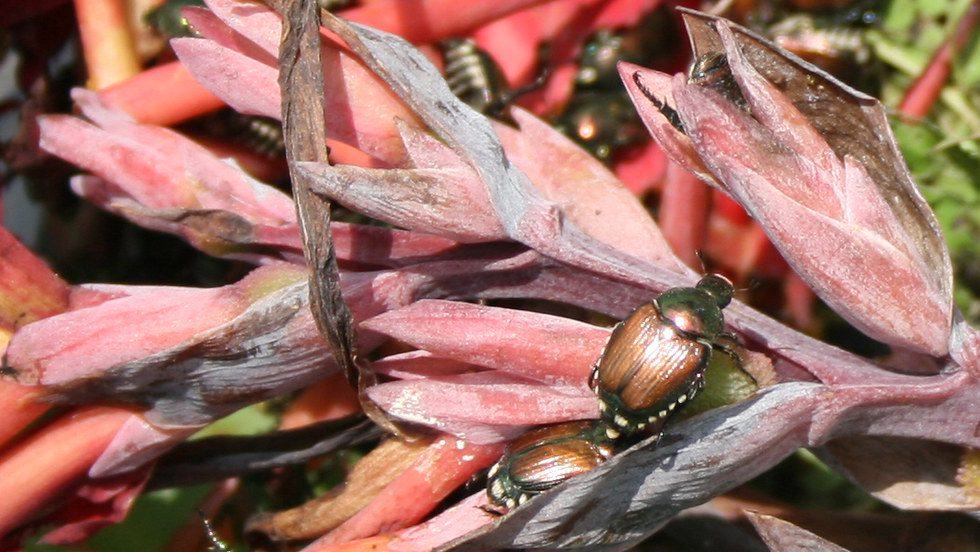
Ah… it’s that time of the year when the pesky beetles are here in full force.
These resilient insects have been present in the U.S. since 1916 and have wreaked havoc in lawns and gardens ever since.
Known as one of the most devastating plant pests in the Eastern U.S., the warm sunny climate in the Southeast makes an ideal habitat for these pests.
Usually emerging in early June, their numbers have grown exponentially over the past few weeks in Jackson County.
Questions like, “I have Japanese beetles on my trees, what do I do?” and “How long until my plants die?” are frequent during the summer months.
The metallic green and copper colored beetles are group feeders that cause devastation to trees and other landscape plants.
These efficient eaters are known to feed on over 300 species of plants and can cover several miles once present.
The adult beetles are not the only ones to worry about, the grubs (immature beetles) feed on roots of turfgrasses and vegetables.
An easy way to know if your plants are infested with Japanese beetles is if your leaves have a skeletonized appearance with holes in-between the leaf veins. The leaves may also have an appearance that looks like they have been scorched with fire.
Rainy weather and moist lawns provide the perfect environment to host grubs and eggs.
While Japanese beetles will eat nearly any plant, those most susceptible to being attacked by these beetles are roses, crabapples, grapes, elms, maples, and plums.
Fortunately, there are many methods to combat these insects.
For physical control, if the numbers are low it is best to shake them off of plants in the morning into a bucket with soapy water. A group of beetles release scents to attract more, so timely removal is important.
If infestation is serious, chemical control may be necessary. Dinotefuran, imidacloprid, and pyrethroids such as cyflurin and bifenthrin are effective control measures against Japanese beetles. Carbaryl or ‘Sevin dust’ is another effective insecticide.
A few organic controls commonly used are insecticidal soaps, garlic and orange peels.
Serious infestations may require multiple applications, but be sure to follow label directions to check if the insecticide is safe for use on your plant and when the best time to spray is.
For more information on how to combat Japanese beetles, please email us at uge1157@uga.edu or call 706-367-6344.